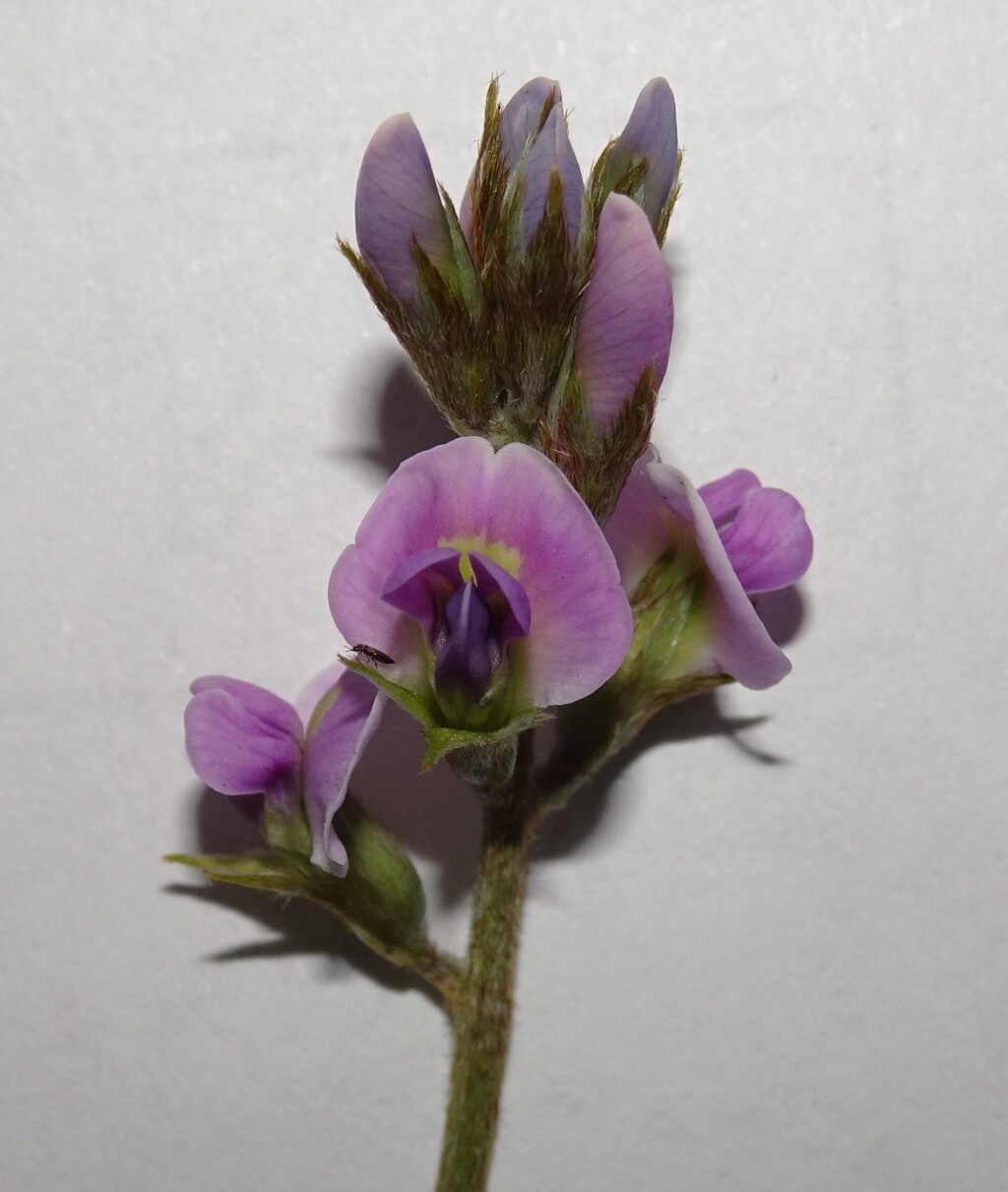Glycine canescens
F.J.Herm. Silky GlycineTrailing or twining herb, wholly silky-strigose; stems slender, non-stoloniferous, hairs mostly grey, often intermixed with rusty ones. Leaves pinnately trifoliolate, petiole 3–20 mm long; leaflets filiform to narrowly elliptic-lanceolate, 2–6 cm long, 2–8 mm wide, apices acuminate, acute or rounded; terminal leaflet on petiolule 1–8 mm long; lateral leaflets sessile to subsessile; stipellae present on all petiolules; leaflet reticulation obscure. Racemes 6–12-flowered; peduncle 3–7 cm long. Flowers on pedicels 1–2 mm long, usually arranged loosely and distally on rachis; calyx 4–5 mm long, lower 3 teeth equalling to slightly exceeding the tube; petals pinkish-purple to mauve, fading to blue; standard 6–9 mm long; keel shorter than wings. Pod linear, 2–4 cm long, 3–4 mm wide, slightly compressed; seeds 3–10, short-obloid to quadrate, c. 3 mm long, smooth and shining or minutely muricate, black or mottled. Flowers mostly early spring.
MuM, Wim, RobP, MuF, Gold. Also WA, NT, SA, Qld, NSW. Apparently confined to far north-west Victoria where extremely rare. Grows in sandy or stony soils in a variety of habitats.
Jeanes, J.A. (1996). Fabaceae. In: Walsh, N.G.; Entwisle, T.J., Flora of Victoria Vol. 3, Dicotyledons Winteraceae to Myrtaceae, pp. 663–829. Inkata Press, Melbourne.
 Spinning
Spinning


